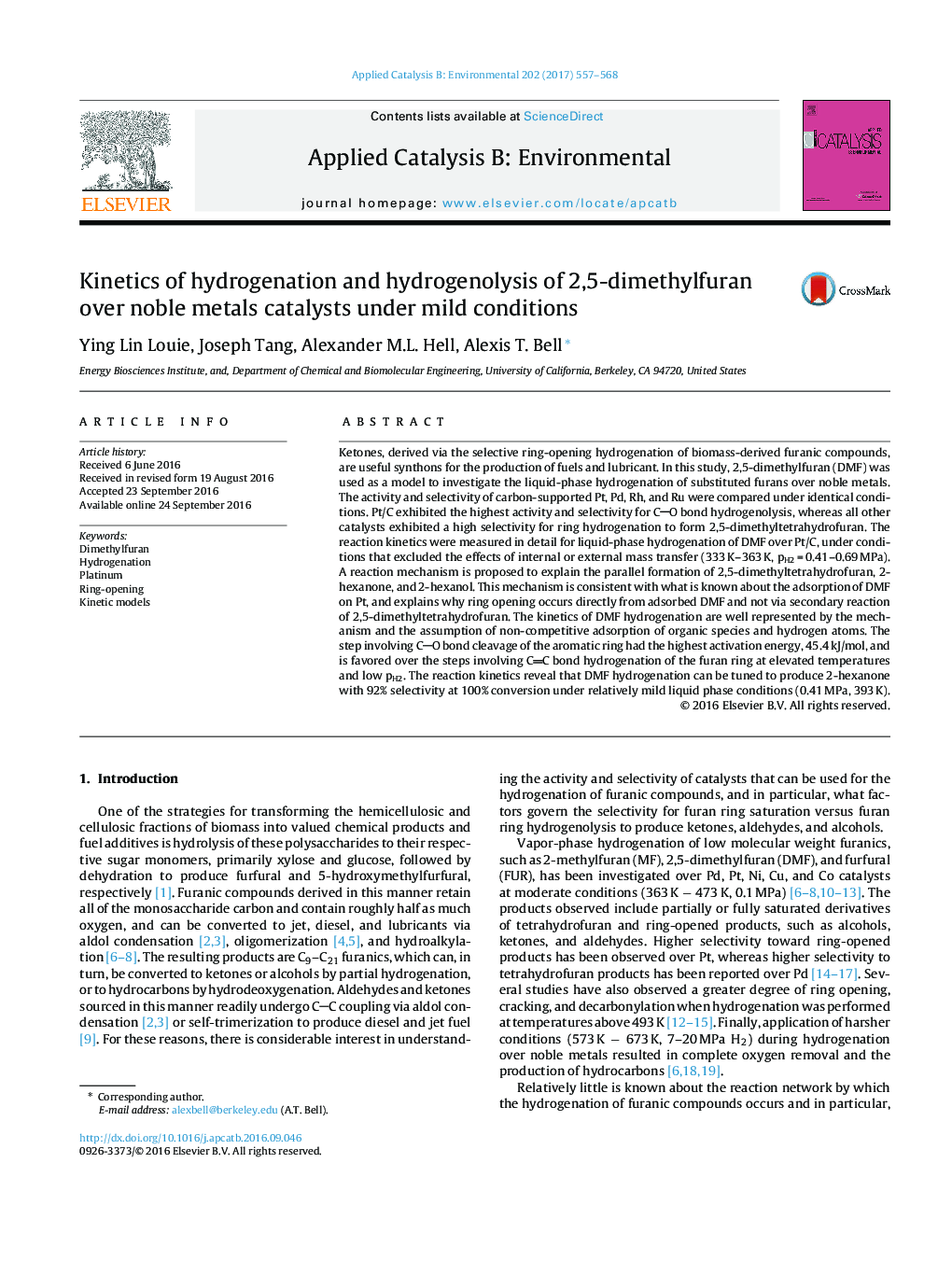| کد مقاله | کد نشریه | سال انتشار | مقاله انگلیسی | نسخه تمام متن |
|---|---|---|---|---|
| 6454900 | 1418818 | 2017 | 12 صفحه PDF | دانلود رایگان |

• Kinetics for the hydrogenation of 2,5-dimethylfuran in liquid phase are investigated.
• Activity and selectivity of Pt/C, Pd/C, Rh/C, and Ru/C for hydrogenation are compared.
• Influence of reaction conditions on the overall reaction network is discussed.
• Rates of DMF hydrogenation and hydrogenolysis are described by a microkinetic model.
Ketones, derived via the selective ring-opening hydrogenation of biomass-derived furanic compounds, are useful synthons for the production of fuels and lubricant. In this study, 2,5-dimethylfuran (DMF) was used as a model to investigate the liquid-phase hydrogenation of substituted furans over noble metals. The activity and selectivity of carbon-supported Pt, Pd, Rh, and Ru were compared under identical conditions. Pt/C exhibited the highest activity and selectivity for CO bond hydrogenolysis, whereas all other catalysts exhibited a high selectivity for ring hydrogenation to form 2,5-dimethyltetrahydrofuran. The reaction kinetics were measured in detail for liquid-phase hydrogenation of DMF over Pt/C, under conditions that excluded the effects of internal or external mass transfer (333 K–363 K, pH2 = 0.41–0.69 MPa). A reaction mechanism is proposed to explain the parallel formation of 2,5-dimethyltetrahydrofuran, 2-hexanone, and 2-hexanol. This mechanism is consistent with what is known about the adsorption of DMF on Pt, and explains why ring opening occurs directly from adsorbed DMF and not via secondary reaction of 2,5-dimethyltetrahydrofuran. The kinetics of DMF hydrogenation are well represented by the mechanism and the assumption of non-competitive adsorption of organic species and hydrogen atoms. The step involving CO bond cleavage of the aromatic ring had the highest activation energy, 45.4 kJ/mol, and is favored over the steps involving CC bond hydrogenation of the furan ring at elevated temperatures and low pH2. The reaction kinetics reveal that DMF hydrogenation can be tuned to produce 2-hexanone with 92% selectivity at 100% conversion under relatively mild liquid phase conditions (0.41 MPa, 393 K).
Figure optionsDownload high-quality image (144 K)Download as PowerPoint slide
Journal: Applied Catalysis B: Environmental - Volume 202, March 2017, Pages 557–568